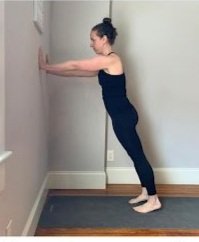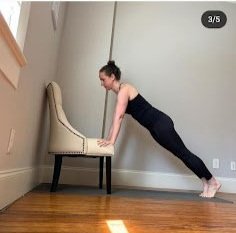Are planks all they’re cracked up to be?
It seems like everyone these days is working on doing “planks” to keep their core strength- And for good reason!
They work all of the core muscles including the all-important, transverse abdominus or “girdle” muscle. This muscle is integral to providing deep core and spine stability for all functional movements we do during the day.
In addition to working the core muscles, planks are also great at activating the shoulders, arm muscles, glutes, hamstrings, and lower back muscles. Keeping these muscles strong is essential for supporting your posture and keeping you stable as you move through the day.
Are planks safe to do after pregnancy?
After having a baby, or maybe a few, it can be extremely difficult for some moms to return to planking. During pregnancy, the core and glutes can become weak, making holding a plank difficult to do. And if poor form is present, then injury can happen. Modifying a traditional plank is a great way to build up strength, form, and stability.
It should also be noted that if you are suffering from abdominal separation, or diastasis rectus abdominus (DRA), then you should avoid planks to start with. Planking too early in recovery before strength and control are regained is not advised. This can cause too much intrabdominal pressure making the separation worse. For an exercise progression designed specifically to heal and close DRA, click here.
How to functionally modify a plank
Now, if you Google or YouTube “Plank Modification”, you most likely are going to see fitness influencers showing you how to do the plank from your knees. But to be honest, that makes it so much more difficult to progress back to a plank on your toes, with your legs extended.
Instead of progressing your plank from your knees, here are my 5 tips for modifying and progressing your plank.
Start with your hands on the wall, instead of knees on the floor. This will help keep a plank or push-up a full body and functional exercise. Hold this position for at least 1 minute. If you can hold this while piston breathing and keeping the pelvis and spine still, then you can progress to #2.
2. Plank on the wall with leg movements, alternating marching your leg up or moving it out to the side during each exhale. Hold this for at least 1 minute. If you can hold this while piston breathing and keeping the pelvis and spine still, then you can progress to #3.
3. Plank on a countertop or chair. Hold this for at least 1 minute. If you can hold this while piston breathing and keeping the pelvis and spine still, then you can progress to #4.
4. Plank on the floor. You can do this on either forearms or with your arms straight, it depends on your comfort level. I prefer arms straight to integrate the whole arm. Hold this for at least 1 minute. If you can hold this while piston breathing and keeping the pelvis and spine still, then you can progress to #5- the BONUS
5. The BONUS move! Plank with the tops of your feet against the floor! This is where the magic happens to activate the whole front of the body. While this isn’t as functional as the standard plank position, this is a great challenge and lights up your abdominals! Hold for a minute and you’re my hero!
This is also a great way to progress a push-up.
Once you master holding the traditional plank position, the variations are endless. The important thing to remember is to make sure to hold the spine and pelvis stable for at least 1 minute before adding on any extra challenging movements.
If you’re struggling with regaining your core strength after birth, or are struggling with diastasis rectus abdominus (DRA), incontinence, pain, or weakness join my CORE+ Healing DRA Masterclass. This is a 12-week program designed to progress your core strength, heal abdominal separation, and help you feel stronger and more connected to your body. To learn more and join, click here.






